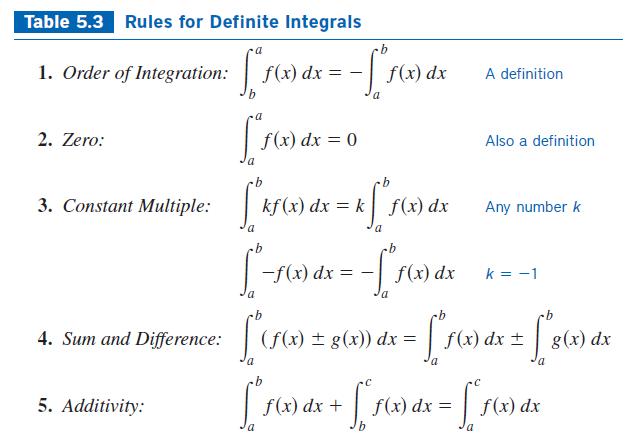
Moreover, the integral function is an anti-derivative. Question 4: State the fundamental theorem of calculus part 1?Īnswer: The fundamental theorem of calculus part 1 states that the derivative of the integral of a function gives the integrand that is distinction and integration are inverse operations. Substituting the values of I1 and I2 in equation (A), we get, = x e x – ∫ dx = xe x – e x = e x (x – 1) Let, The first function = f(x) = x and the second function = g(x) = e x. To solve I 1, we will use the rule of integration by parts. Where, I 1 = ∫ x e x dx and I 2 = ∫ sin (πx/4) dx Solving I 1 Question 3: Evaluate ∫ 0 1 (xe x + sin (πx/4) dxĪnswer : Let I = ∫ 0 1 (xe x + sin (πx/4) dx. Using the standard integral ∫ dx / (√) = sin –1 (x/a), we get Question 1: Evaluate ∫ 0 1 dx / (√)Īnswer : Let I = ∫ 0 1 dx / (√). To solve the indefinite integral, let’s substitute sin2t = u, so that 2 cos2t dt = du or cos2t dt = ½ du. Solution: Let I = ∫ 0 π/4 sin 32t cos2t dt Using the rules of partial fractions, we get Solution: Let I = ∫ 1 2 x dx / (x + 1)(x + 2) Hence, using the second fundamental theorem of calculus, we get Let’s substitute (30 – x 3/2) = t, so that – 3/2 √x dx = dt or √x dx = – 2/3 dt. Solution: Let I = ∫ 4 9 dxįirst, we find the anti-derivative of the integrand. Using the second fundamental theorem of calculus, we get Now, the indefinite integral, ∫ x 2 dx = x 3/3 = F(x) That’s it! Let’s look at some examples now. There is no need to keep the integration constant C because it disappears while evaluating the value of the definite integral. Find the indefinite integral ∫ f(x) dx.Two simple steps can help you calculate ∫ a b f(x) dx as shown below:
Second fundamental theorem of calculus practice problems download#
You can download Integrals Cheat Sheet by clicking on the download button below



The area of this shaded region depends on the value of ‘x’. However, the assertions made below are true for other functions as well. Note: We are assuming that f(x)> 0 for x ∈. If ‘x’ is a point in, then ∫ a x f(x) dx represents the area of the shaded region in the figure above. By definition, ∫ a b f(x) dx is the area of the region bounded by the curve y = f(x), the x-axis and the coordinates ‘x = a’ and ‘x = b’.


 0 kommentar(er)
0 kommentar(er)
